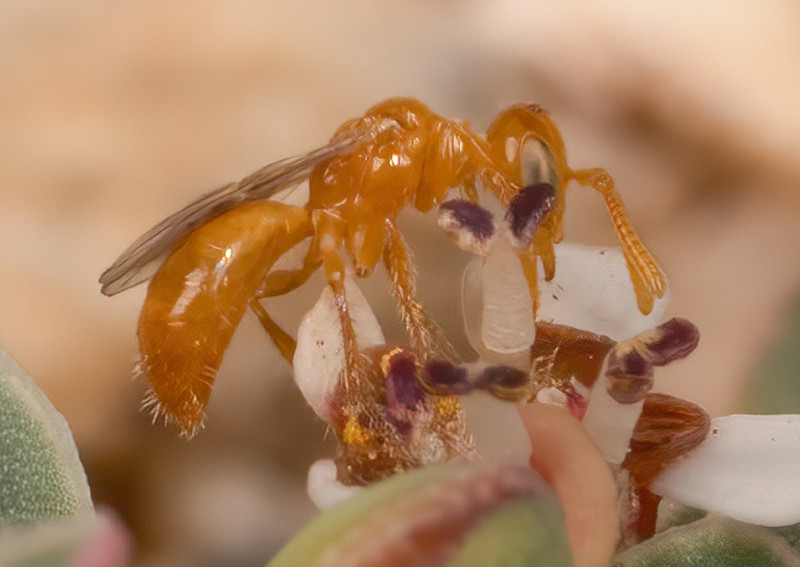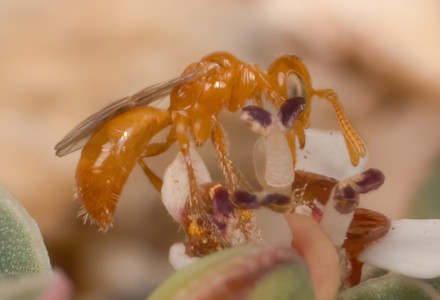
Perdita Minima Facts
- The truly incredible Perdita Minima ranks as one of the most fascinating of bee on the planet. That’s understandable, given the fact that individuals of the arthropod remain so tiny that most people don’t even know the species exists.
- In point of fact, entomologists know this insect as the smallest species of bee currently known to man. To give a comparison that allows one to put this into perspective, its entire body could easily fit on the head of an average-sized bee.
- Scientists know that it has a moderately restricted habitat range. Yet we know virtually nothing about its numbers. Not surprisingly, its tiny size literally makes it difficult for experts to find individuals to determine accurate information.
- Due to this lack of sufficient information, the IUCN currently has no status listing for it on the organization’s Red List. Nevertheless, while we know almost nothing about its numbers, many suspect that its existence might be threatened.
- This belief springs from a combination of factors relating to its habitat and environment. The area the Perdita minima inhabits remains especially vulnerable to climate change. Human expansion also threatens to further reduce its natural range.
Related Articles
Cuckoo Bee Cape Honey Bee Carpenter Bee
Perdita Minima Physical Description
Much as all members of its genus, the Perdita Minima, as the name implies, has a very small body. Yet even among its own genus, this truly astonishing insect ranks as incredibly tiny. Adults of this species average slightly less than 0.08 in (2 mm) in total body length.
Its natural coloring typically presents viewers with dazzling hues, at least when they do actually manage to spot it. This color pattern primarily consists of shades of bright yellow. However, some individuals also display streaks of gold or even white.
While it does technically have a stinger, it remains incapable of piercing the skin of a human, however. The wings of the Perdita minima also merit attention. That holds true because these actually qualify as powerful and large, at least relative to the body size.
These comparatively strong wings also allow it to often carry comparatively large quantities of pollen. In another marvel of evolutionary development, numerous relatively large hairs cover the tiny legs of this small but surprisingly impressive insect.
- Kingdom: Animalia
- Phylum: Arthropoda
- Class: Insecta
- Order: Hymenoptera
- Family: Andrenidae
- Genus: Perdita
- Species: P. minima
Perdita Minima Distribution, Habitat, and Ecology
Its tiny size does not solely hold responsibility for the fact that few people even know the Perdita Minima exists. That’s also due to the nature of the region it inhabits. In point of fact, the naturally evolved native habitat range it has may surprise many.
This zone of habitation consists primarily of the thinly populated sections of the southwestern United States, in North America. Further amazing the learner, the great majority of individuals choose to live in the numerous desert regions of the area.
To the surprise of many who learn of its existence, this variety of bee does not live in colonies like many do. Instead, individuals live solitary lives and build nests in soil that remains sandy and loose. While the body stays tiny, its effect on the environment does not.
That holds true because it pollinates vast quantities of plants and wildflowers native to the region, including some endangered species. Not surprisingly, the adults and larvae alike feed primarily on the pollen and nectar of these same wildflowers.
Much like other members of its genus, the Perdita minima appears to be highly selective. That’s due to its tendency to feed entirely on a single species of flora. Thus, any environmental factor that threatens its food source also naturally threatens the insect itself.
Species Sharing Its Range
Dakota Skipper Yosemite Cave Pseudoscorpion Cougar
Check out our other articles on 5 Sublime North American Trees, Victoria Crowned Pigeon, McMurdo Dry Valleys, Dall’s Porpoise, Cookiecutter Shark, Mountain Chicken

